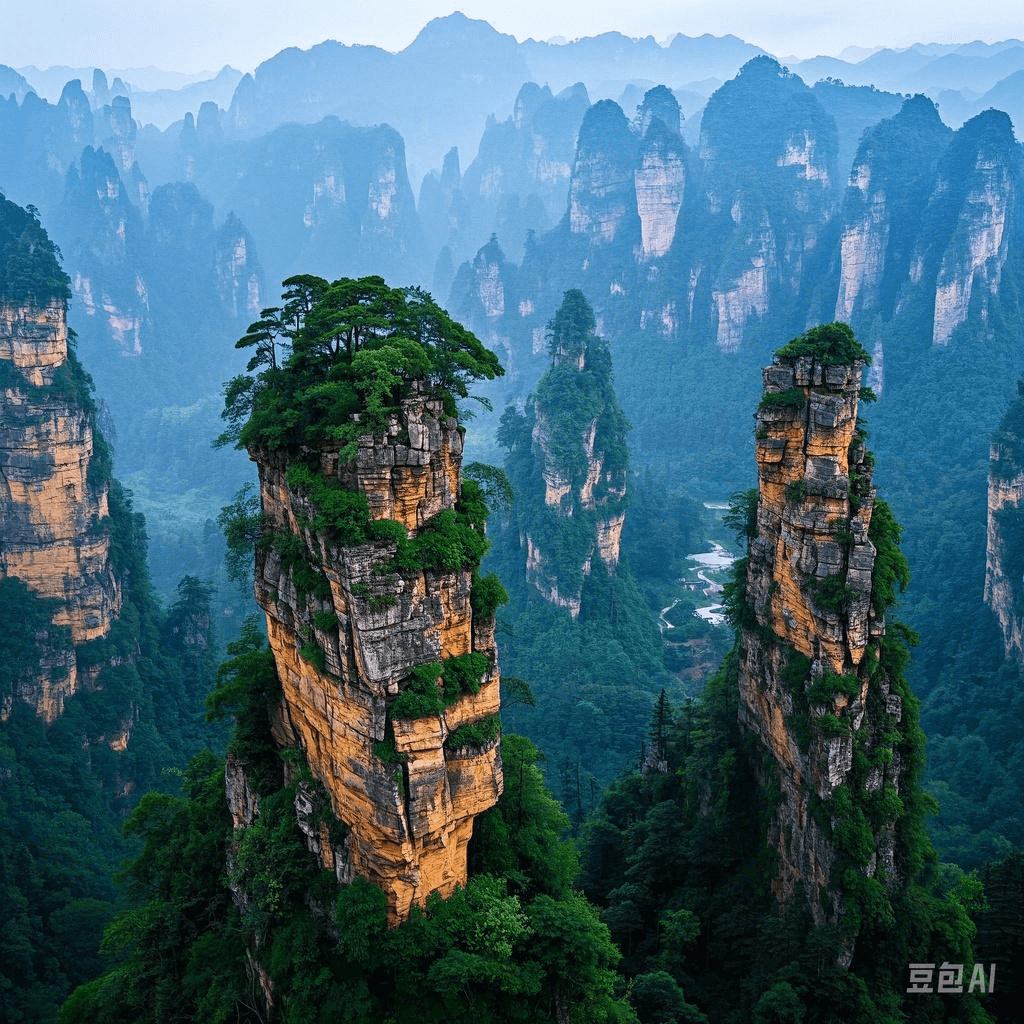
China Zhangjiajie refers to Zhangjiajie, a prefecture-level city in Hunan Province, China. Here is a detailed introduction to Zhangjiajie:

Name: Zhangjiajie (formerly known as Dayong)
Location: Northwest of Hunan Province, upstream and middle reaches of the Lishui River, within the Wuling Mountains
Administrative Division: Under the jurisdiction of Hunan Province, it governs 2 districts (Yongding and Wulingyuan) and 2 counties (Cili and Sangzhi)
Area: 9,533 square kilometers (as of recent data)
Population: 1.504 million people (as of the end of 2022)
Zhangjiajie has a long history, with human activities dating back to the Neolithic Age along the Lishui River.
It was once part of the Qianzhong Prefecture during the Qin Dynasty and later belonged to the Wu and Chu states during the Spring and Autumn and Warring States periods.
During the Tang Dynasty, Zhangjiajie was officially incorporated into administrative divisions as part of the Li Prefecture and Liyang Prefecture.
Over time, it underwent various administrative changes until it was eventually established as a prefecture-level city in 1988 and renamed Zhangjiajie in 1994.
Zhangjiajie is renowned for its unique sandstone landforms, which have earned it the nickname "Enlarged Bonsai, Miniaturized Fairyland."
Zhangjiajie National Forest Park, established in 1982 as China's first national forest park, is a major attraction.
The Wulingyuan Scenic Area, which includes Zhangjiajie National Forest Park and other scenic spots, was listed as a World Natural Heritage Site by UNESCO in 1992.
Other notable attractions include Tianmen Mountain National Forest Park and Zhangjiajie Grand Canyon.
Zhangjiajie is the birthplace and central area of the Hunan-Hubei-Chongqing-Guizhou Revolutionary Base Area.
The area has a rich cultural heritage, with numerous ancient cultural relics and human legends.
Notable cultural figures from Zhangjiajie include Zhang Debo, a scholar, educator, and translator; Yuan Zhonglang, a literary figure, educator, and revolutionary; and Liu Yi, a musician and educator.
Zhangjiajie is an important tourist city in China, known for its stunning natural scenery and cultural heritage.
The city has made significant strides in tourism development, with a focus on eco-tourism and sustainable development.
Zhangjiajie is also actively promoting its cultural tourism resources, aiming to become a leading tourist destination in China and beyond.
In summary, Zhangjiajie is a prefecture-level city in Hunan Province, China, renowned for its unique natural scenery and rich cultural heritage. It is an important tourist destination that attracts visitors from all over the world.